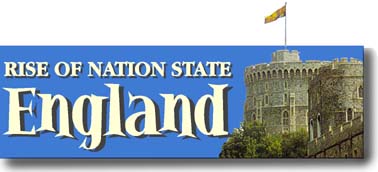|
September 16, 2002 Mr. Sedivy's Site Has Moved Please Use the NEW Site!
|

|


|
|
|
Mr. Sedivy's
More Features:
|
Highlands Ranch High School - Mr. Sedivy Rise of Nation State England "Kelt or Selt?" Names of Celtic Rivers: City / Town Names: Celtic Contributions Appearance of Ancient Celts That their "barbarian" speech would grate on Greco Roman ears was only to be expected of outlanders who wore not the "civilized" toga but the trousers of a horse-riding people. Celtic champions would strut before the foe, brandishing their arms, boasting of their prowess, and hurling taunts and insults. They not only looked big; some were big. The Celts exercised "girth control" - a fat warrior was fined.
Celtic Power Over 20,000 Gauls crossed the Hellespont into Asia Minor. Trier on the Moselle - bands ranged as far afield as Sicily and Egypt. "The whole race ...
is madly fond of war," Feasting when not fighting, or hunting, or trying to outdo one another wrestling, gaming, or racing their treasured horsed, hotheaded Celtic warriors often turned feasts into bloody brawls. Diodorus Siculs, the Greek historian, tells us: "They cut off the heads of enemies ... and attach them to the necks of their horses. Singing in triumph as they carried off these trophies, they nailed them upon their houses. They embalm in cedar oil the heads of the most distinguished enemies, and preserve them carefully in a chest, and display them with pride to strangers ... Gathering in a chieftain's hall, sitting cross-legged on wolf skin, they would consume prodigious portions of wild boar. And guzzle wine, beer, or mead until they fell 'into a stupor or a state of madness.'" Presenting the traditional hero's portion was a chief of protocol's nightmare. Greek historian Posidon tells us: "When the hindquarters were served up, the bravest hero took the thigh piece, and if another man claimed it, they stood up and fought in single combat to the death." Mr. Sedivy's Lecture Notes & Historical Info The Celts - Rise of Nation State England - Wales and Scotland The 100 Years War More Information Class Activities Related Information
|
Highlands Ranch High School ![]() 9375 South Cresthill Lane
9375 South Cresthill Lane ![]() Highlands Ranch, Colorado 80126
Highlands Ranch, Colorado 80126 ![]() 303-471-7000
303-471-7000
Mr. Sedivy's History Classes
| Colorado History | American
Government | Advanced Placement Modern European
History | Rise of Nation State England | World
History |
| Home | Back to top of page |
Site Contents |


